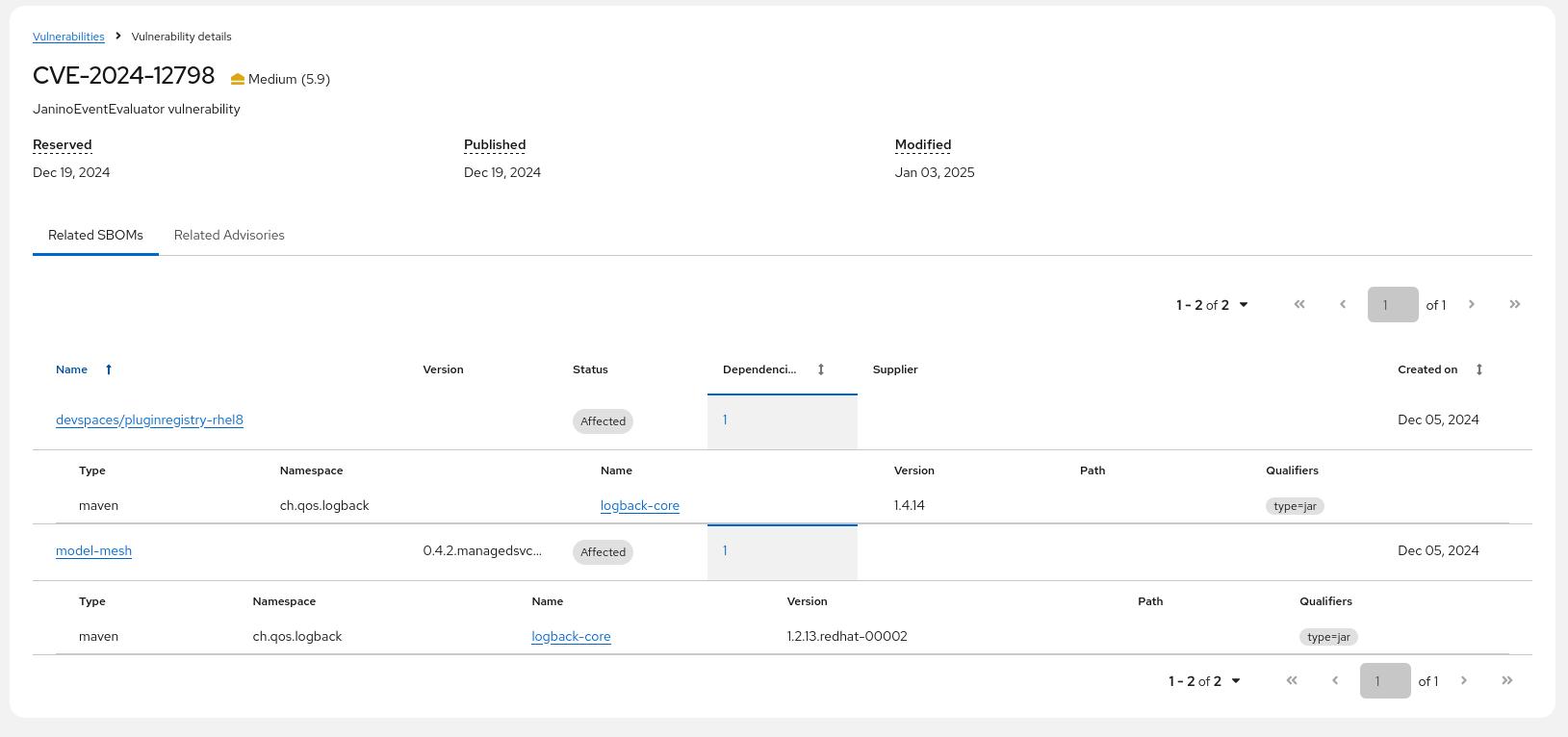The Security Posture according to TPA
Once we have SBOM data (from our own applications, as well as vendor applications), vulnerability data and advisories in our management system - what value can we generate from it?
The key question we asked in the beginning was:
Key Question answered:
"How confident are you that you could identify all affected applications within 24 hours of a critical vulnerability announcement?"
So, how do we answer that question with TPA?
| We only have a few SBOMs in the system, so imagine there was a large number of SBOMs from a company heavily developing applications and deploying them both standalone (e.g. as *.jar files) as well as container images. |
Affected SBOMs ("products") by vulnerability
First, let’s check the "critical vulnerability announcement" from above:
Assuming we know the vulnerability, open the {tpa_url}/vulnerabilities[Vulnerabilities view^,window="tpa"] in TPA and search for CVE-2021-44228:
We get all vulnerabilities mentioning "CVE-2021-44228" (it had a big impact at the time so there are follow-up CVE mentioning it).
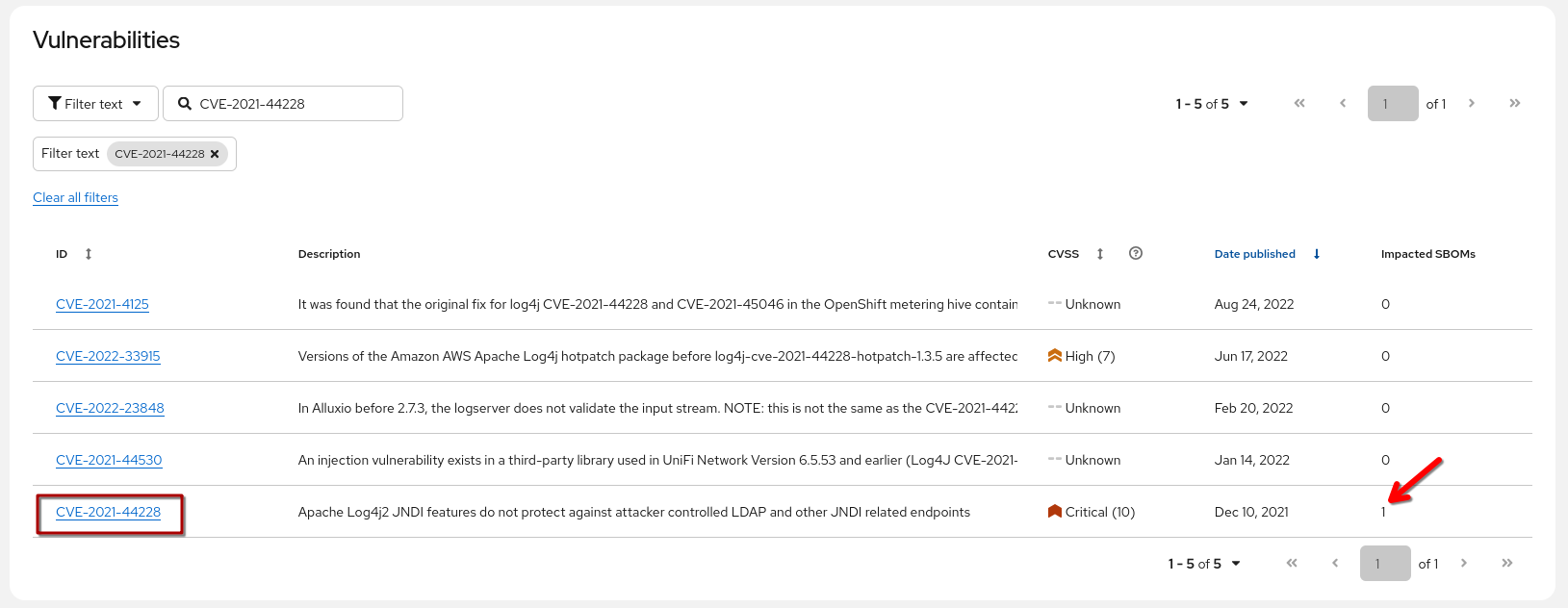
We can immediately see that we have one SBOM affected - so let’s click on the vulnerability title and see more details - the "Related SBOMs" view of the vulnerability opens and I can see that "home-banking" is in status "affected".
Clicking on the number in "Dependencies" shows us the package and version inside the SBOM that is causing the problem:
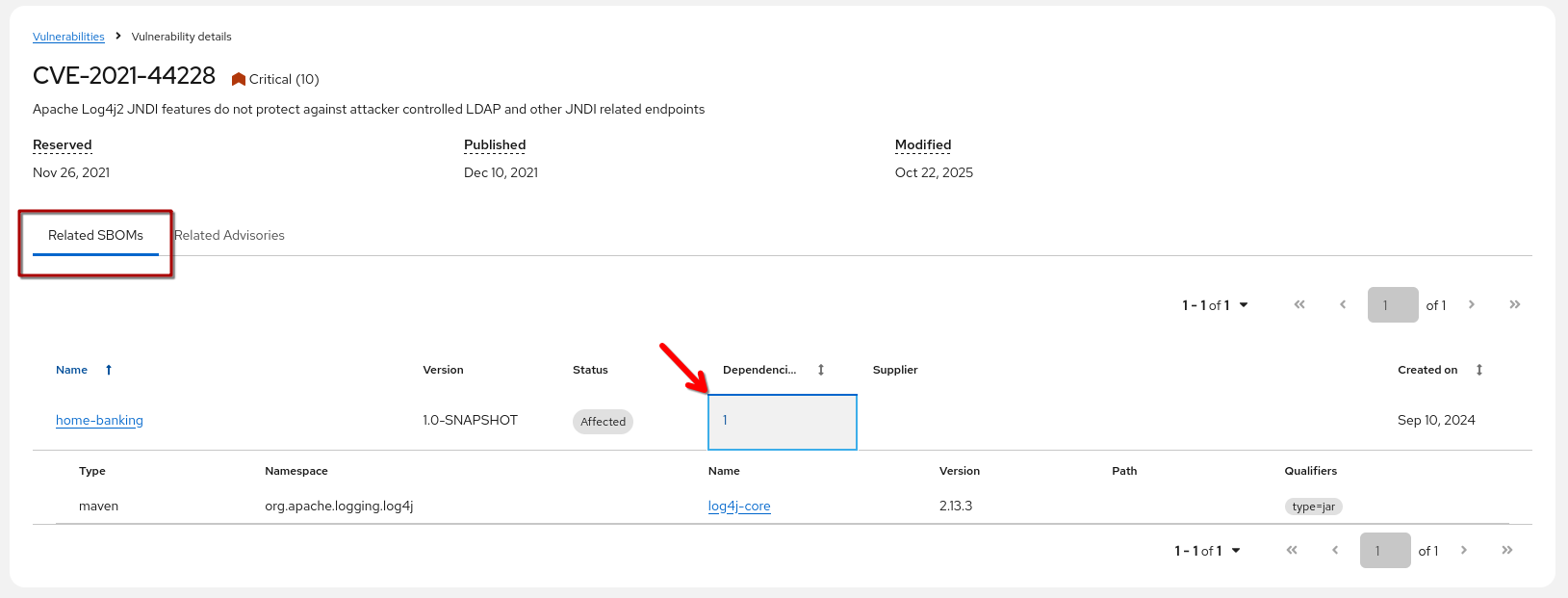
Clicking on the package name shows us that this package (log4j-core in Version 2.13.3) has actually more than one vulnerability listed (as if one wasn’t enough 🙄)
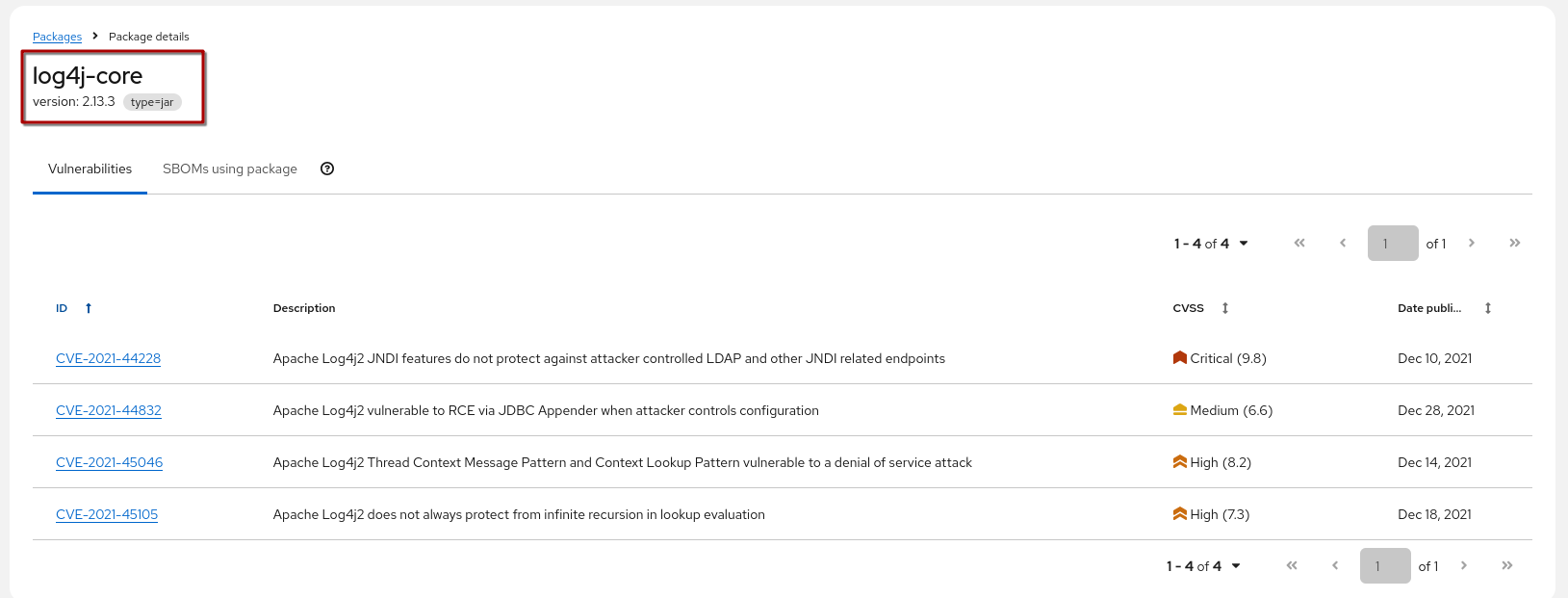
Clicking on "SBOMs using Package" brings us to the package-centric view (regardless of vulnerability) of all SBOMs using this package in this version

SBOM Vulnerabilities
Coming from an SBOM perspective - I see that I still have an old vulnerability here in "devspaces/pluginregistry-rhel8". Is that problem possibly more widespread?
Opening the Vulnerabilities Tab in the SBOM lists the oldest (and thus most likely to be exploited) vulnerabilities first.
(I can also sort by CVSS score, number of affected dependencies, etc).
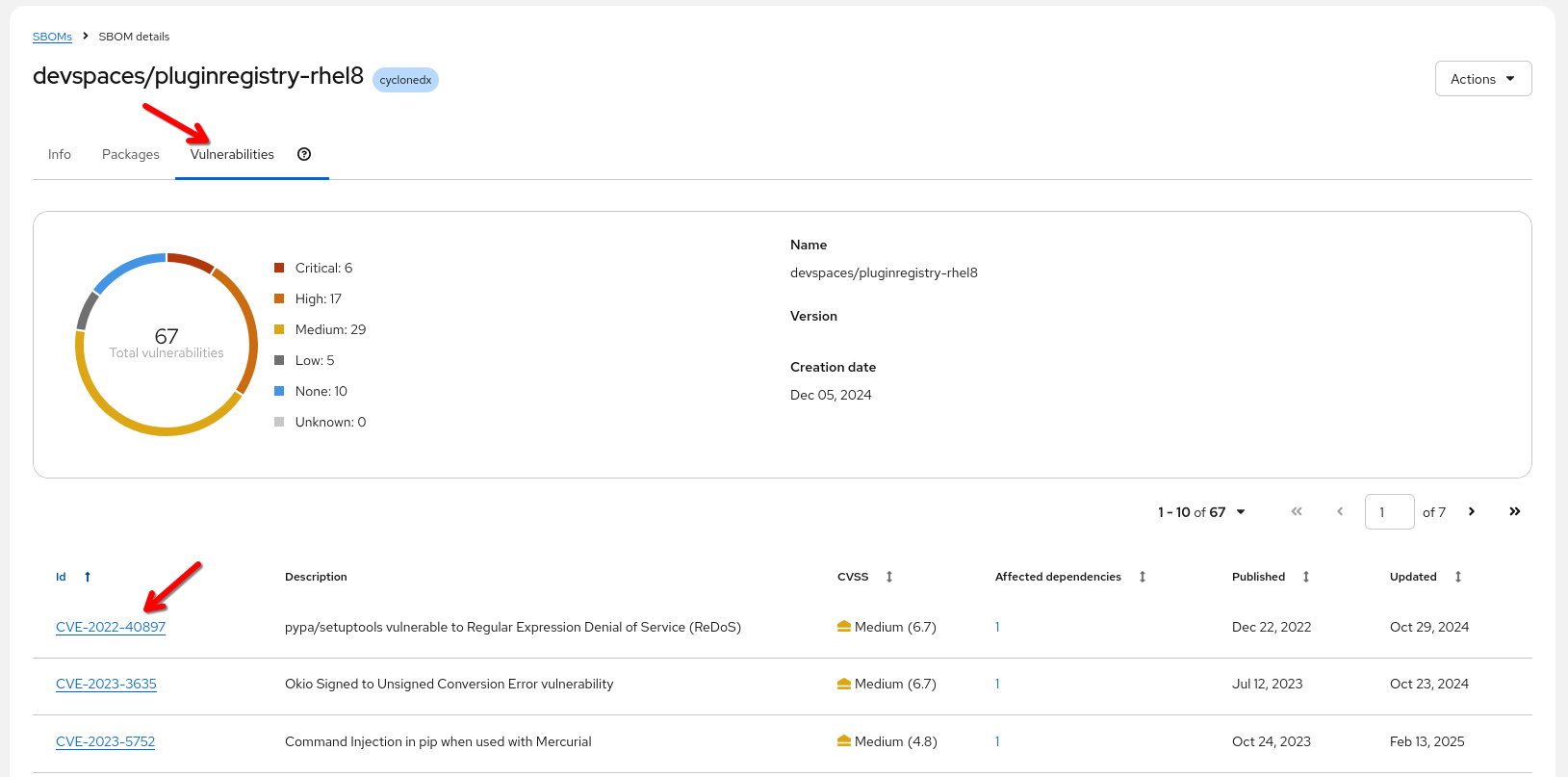
Clicking on the first vulnerability (2022-40897) shows me that devspaces actually contains two versions of the same package, only vulnerable, one fixed - and that our demoimage contains an even older version.
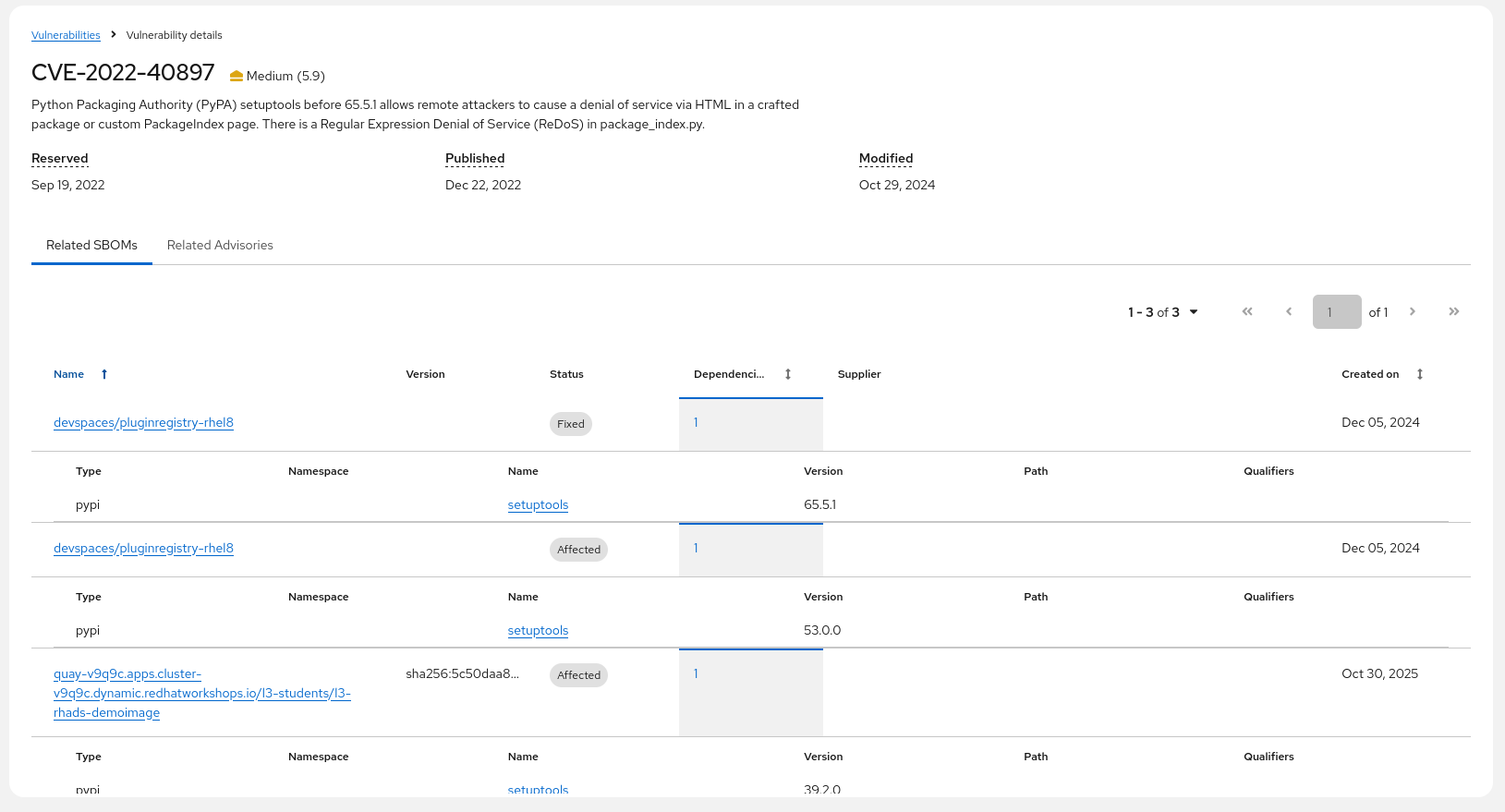
Full-Text
"I heard there’s a problem with the logback stack - what about it?"
Going to the {tpa_url}/search[TPA Search View^,window="tpa"] we can perform a full-text search and get a quick view (tagging the results by type, such as "Package", "Vulnerability", "Advisory",…)
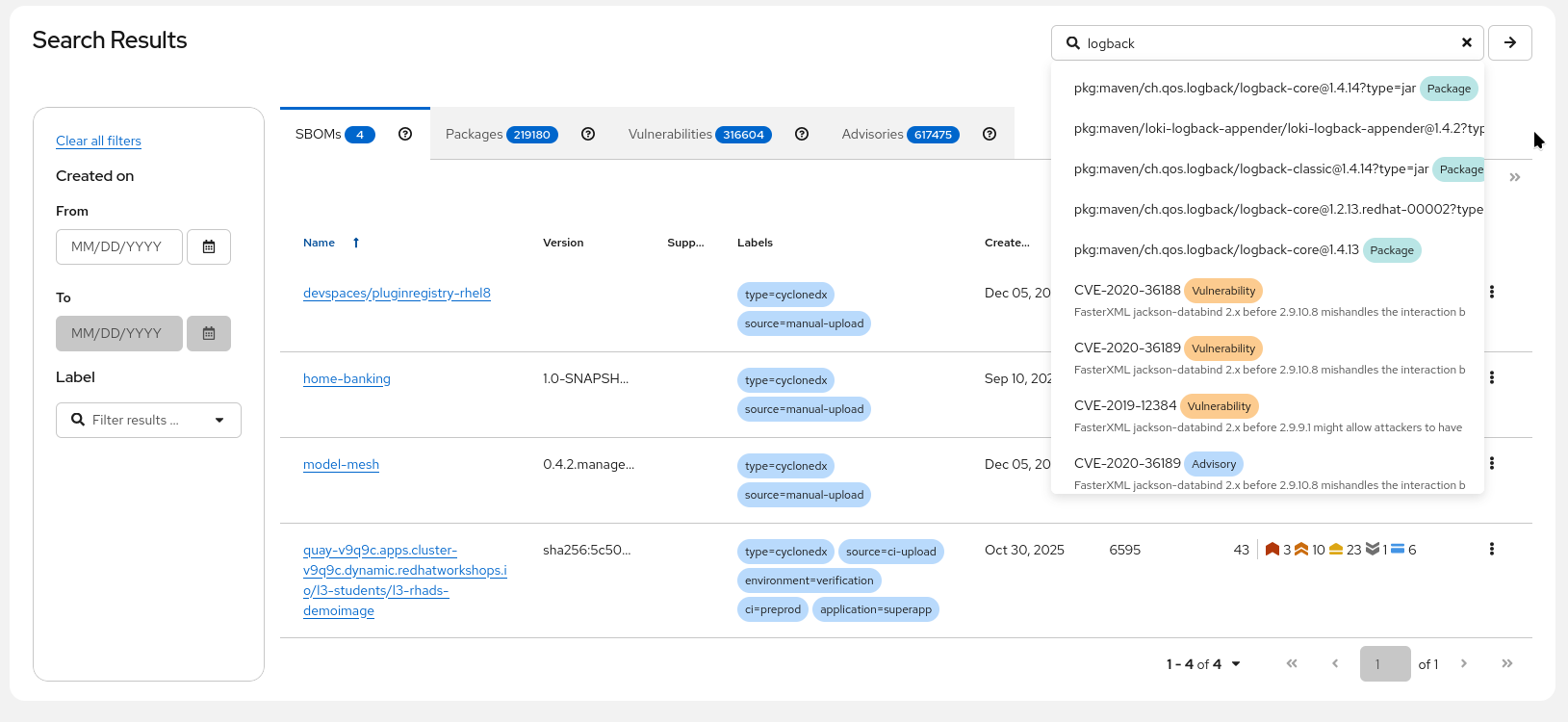
Clicking on the "Packages view" I can see that different versions of logback have different levels of vulnerabilities. I’m interested if any of my SBOMs is using a vulnerable package.
(Ok, we only have four in the database, so I could do that manually, but what if it was 4000?)
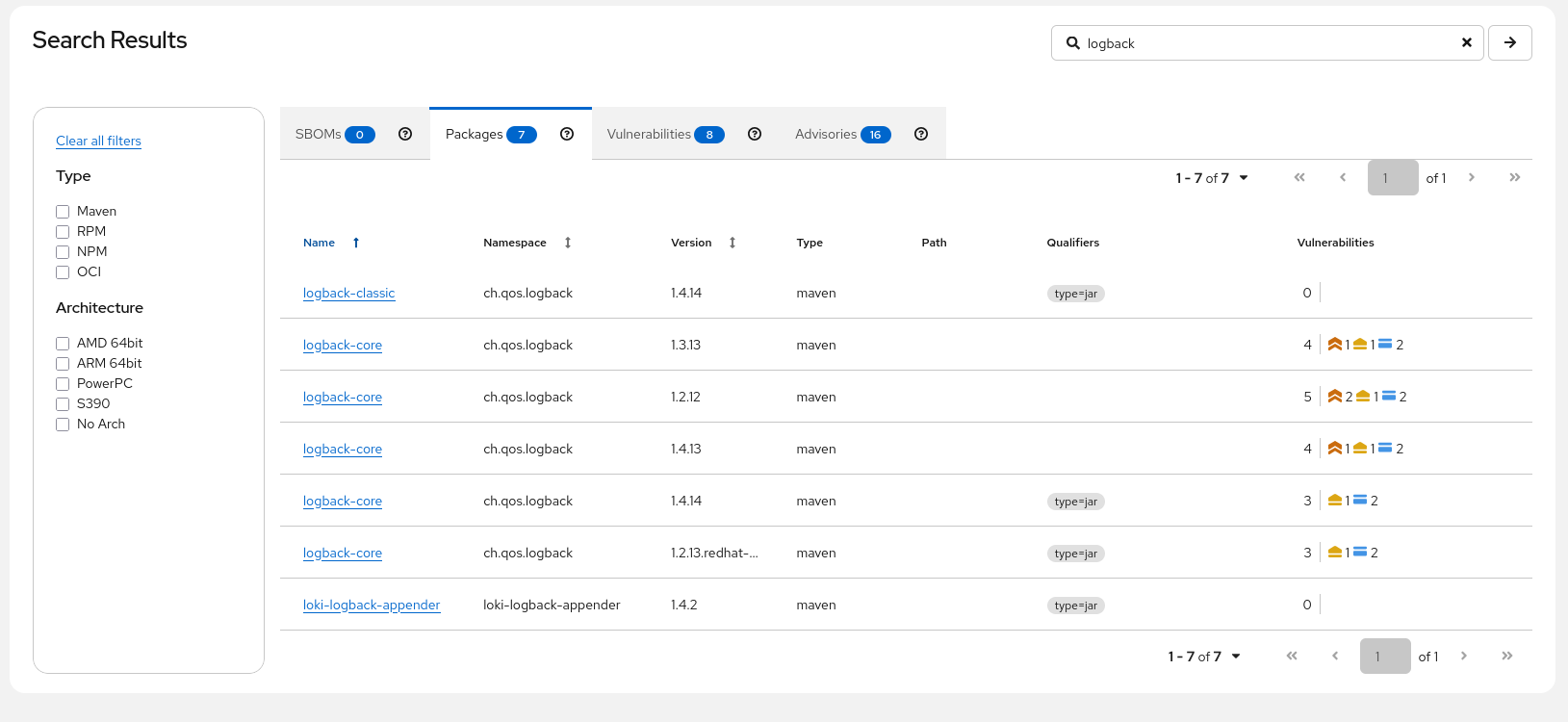
| This is a fulltext search that doesn’t traverse all packages in an SBOM. Instead, we check if any of your SBOMs is using a package with vulnerabilities or via the vulnerabilities view search for "SBOMs affected". |
Checking the Red Hat logback-core shows us…
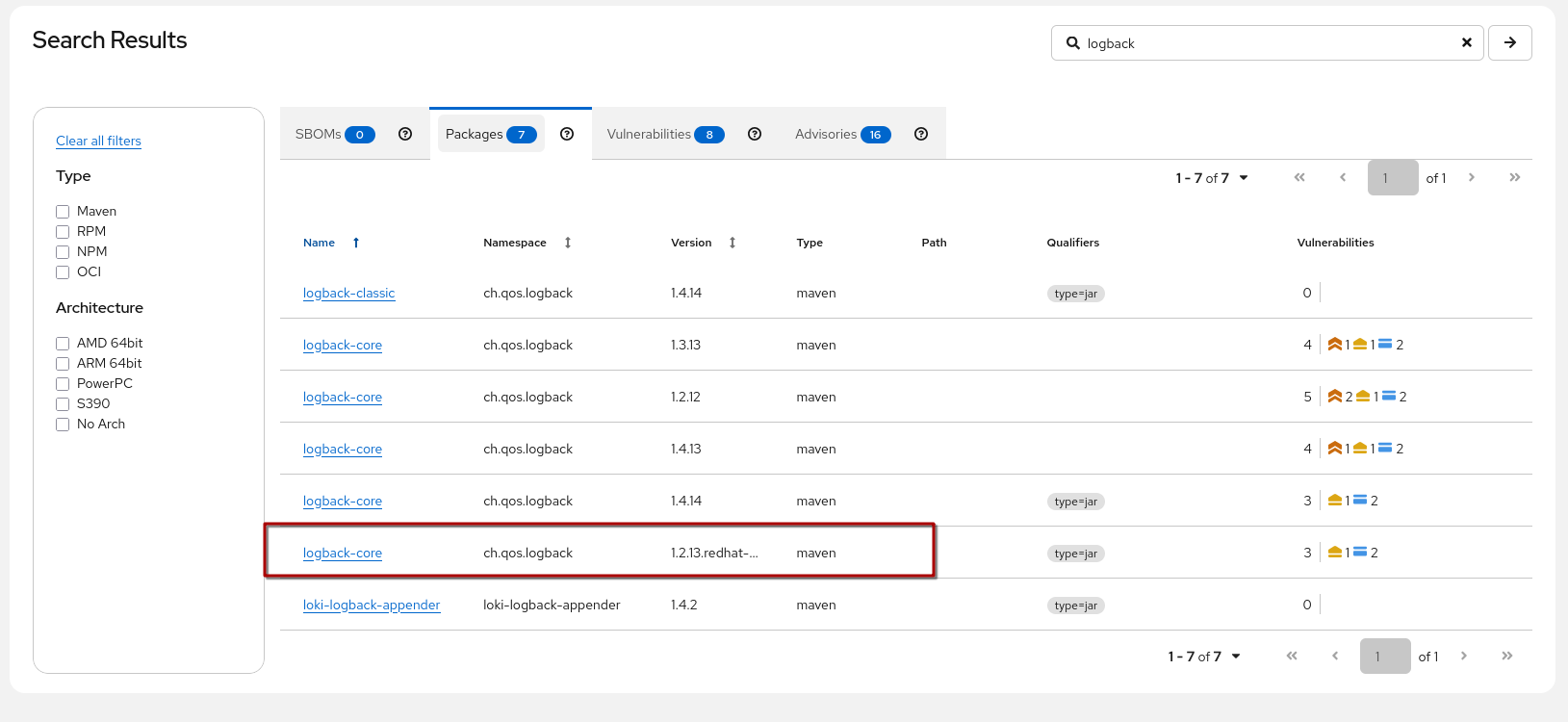
We have a hit, sadly… for this package in this version

But, let’s make sure we don’t have some skeletons in the closet and check the vulnerabilities listed for this package, going to the "Vulnerabilities" tab:

If we check the CVE-2024-12798, we can see that indeed there is more than one SBOM affected - since the CVE lists a version range, and on closer inspection of the dependencies, we can see that "devspaces" is using a newer, but also vulnerable version - according to the CVE:
